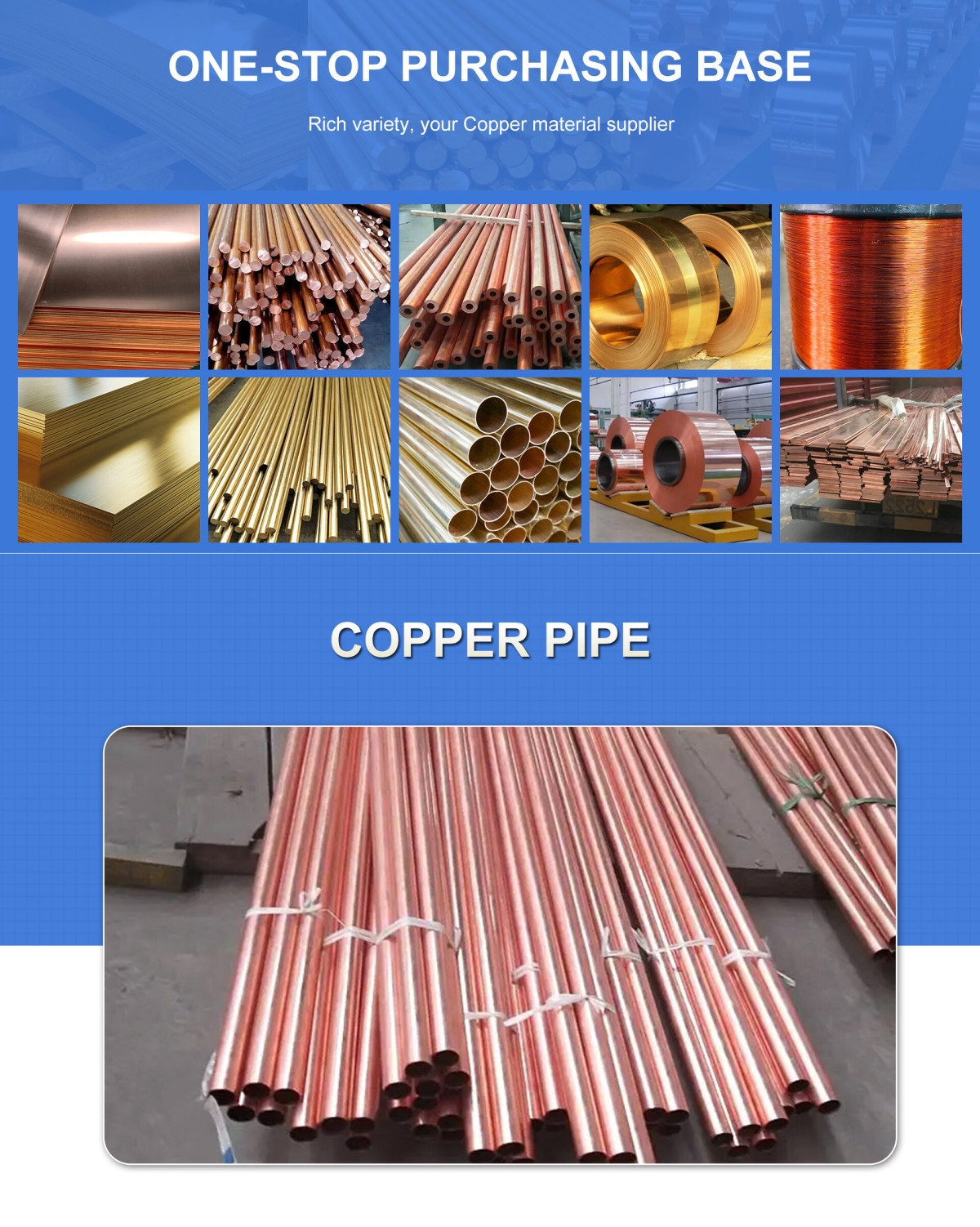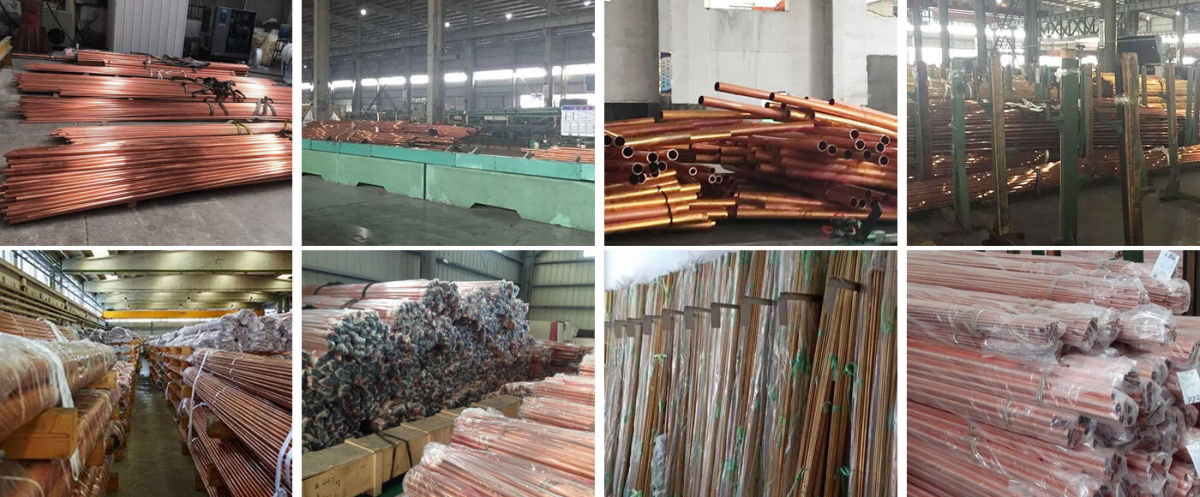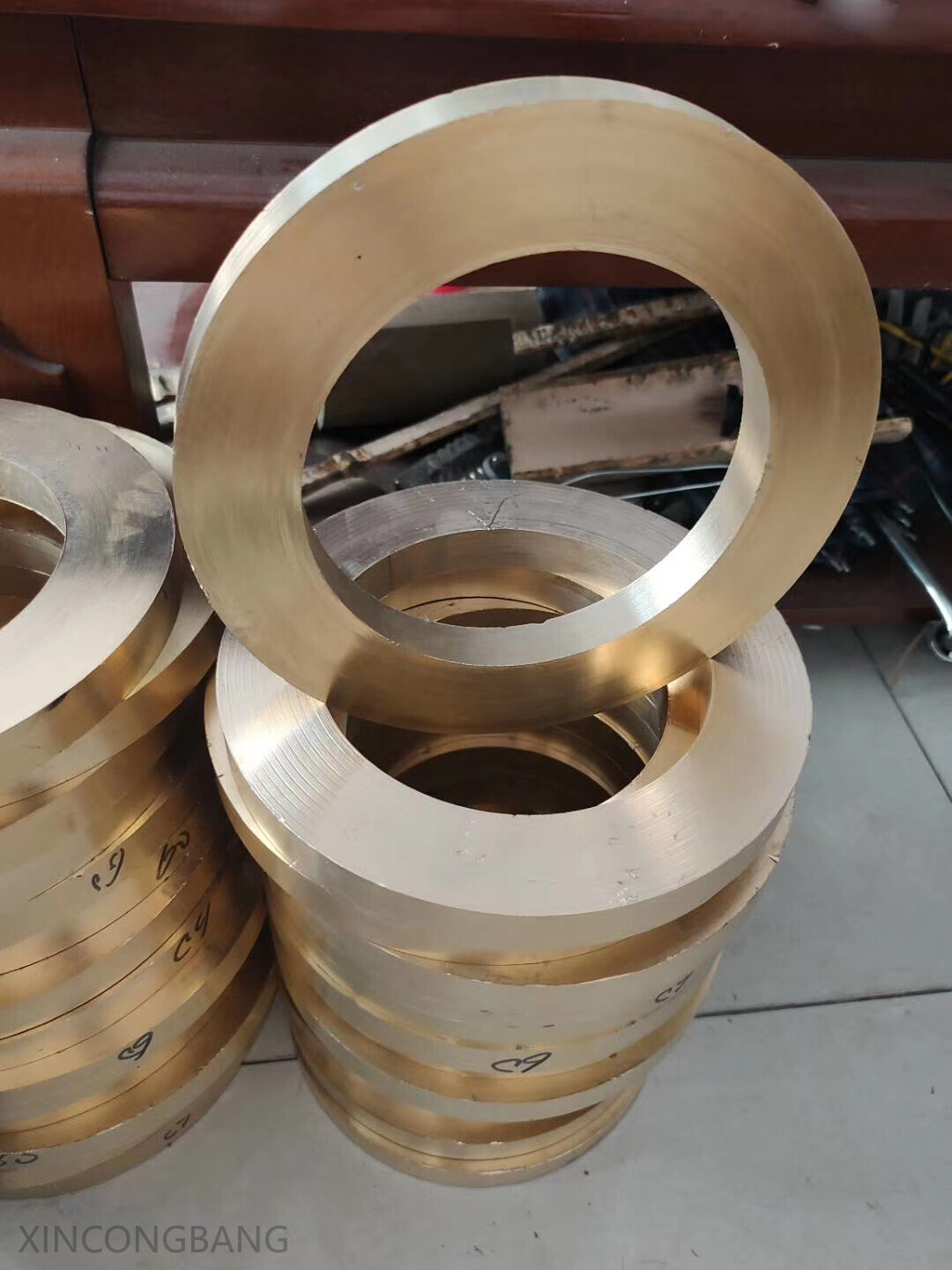
Detailed Dimensional Ranges for C62300 Copper Tubes
C62300 aluminum bronze tubes are manufactured in a range of sizes to meet diverse industrial requirements. Based on supplier specifications :
These dimensions cater to applications requiring precision and structural integrity, such as hydraulic systems, heat exchangers, and marine hardware.
3. International Standards for C62300 Copper Tubes
C62300 aluminum bronze tubes are governed by several ASTM standards, ensuring material quality and performance consistency:
Primary Standard:
- ASTM B150/B150M: Specifies requirements for aluminum bronze rod, bar, and shapes, including C62300. This standard covers chemical composition, mechanical properties, and testing protocols
Related Standards:
- ASTM B283: Governs aluminum bronze forgings, applicable to components like flanges and fittings.
- ASTM B75/B75M: While primarily for seamless copper tubes (C10100–C12200), it provides general guidelines for tube manufacturing processes, which may extend to specialized alloys like C62300
Compliance Notes:
- Materials must meet stringent requirements for chemical composition, tensile strength, and corrosion resistance.
- Testing includes hydrostatic/pneumatic pressure tests, microstructural examinations, and hydrogen embrittlement checks to ensure suitability for critical environments
Detailed Chemical Composition of C62300 Aluminum Bronze
C62300 is an aluminum bronze alloy primarily composed of copper (Cu), aluminum (Al), and iron (Fe), with minor additions of manganese (Mn), silicon (Si), nickel (Ni), and tin (Sn). The chemical composition is standardized as follows:
Key Notes:
- Aluminum (Al) enhances strength, hardness, and corrosion resistance.
- Iron (Fe) refines grain structure and improves mechanical strength
- Trace elements like Mn and Si aid in deoxidation and improve workability
Mechanical Properties of C62300 Aluminum Bronze
C62300 exhibits excellent mechanical properties, making it suitable for demanding industrial applications. The values vary slightly depending on product form (e.g., extruded bars, forgings) and temper conditions (e.g., HR50, TQ50).
Typical Mechanical Properties
Physical Properties
Key Notes:
- High Strength-to-Weight Ratio: Ideal for components like gears and valve stems
- Wear Resistance: Suitable for bearings and bushings in marine and industrial environments
- Thermal Stability: Maintains performance in high-temperature applications (e.g., hydraulic systems)

Production Process of C62300 Copper Tubes
The manufacturing of C62300 aluminum bronze tubes involves a combination of advanced metallurgical techniques to achieve its superior mechanical and corrosion-resistant properties. Key steps include:
Raw Material Preparation & Melting
High-purity copper (Cu: 82.2–89.5%), aluminum (Al: 8.5–11.0%), iron (Fe: 2.0–4.0%), and trace elements (Mn, Si, Ni) are precisely weighed and mixed. The mixture is melted in induction furnaces at temperatures exceeding 1,000°C to ensure homogeneity .
Casting
The molten alloy is cast into billets using vertical/horizontal continuous casting systems. This step ensures minimal porosity and a uniform microstructure, critical for high-strength applications .
Hot Extrusion
Billets are heated to 750–850°C and extruded using hydraulic presses. This process forms seamless tubes with controlled wall thickness and diameter. Low-ratio extrusion (for precision) or high-ratio extrusion (for larger tubes) is selected based on end-use requirements .
Cold Pilgering/Drawing
Extruded tubes undergo cold pilgering (rotary forging) or drawing through dies to refine dimensions, enhance surface finish, and improve mechanical properties like tensile strength (≥490 MPa) and hardness (HB ≥100) .
Heat Treatment
Annealing at 700–750°C optimizes ductility, while quenching (850°C water cooling) and tempering (500–550°C) enhance hardness and stress resistance .
Mechanical Processing
Final machining steps (cutting, drilling, polishing) ensure dimensional accuracy. Welding (TIG/MIG) and brazing are applied for assembly, though soldering is avoided due to poor brazeability .
Quality Control
Non-destructive testing (eddy current, ultrasonic) and leak detection (helium testing) guarantee defect-free products .
Product Advantages of C62300 Copper Tubes
C62300 aluminum bronze outperforms conventional copper alloys (e.g., tin bronze, brass) and stainless steel in demanding environments due to:
Exceptional Corrosion Resistance
Resists seawater, acidic/alkaline media, and high-temperature steam, making it ideal for marine components (e.g., ship cooling systems) and chemical pipelines .
Superior to stainless steel in non-oxidizing environments (e.g., dilute sulfuric acid)
.
High Mechanical Strength
Tensile strength (≥490 MPa) and yield strength (≥340 MPa) surpass standard bronze alloys, suitable for high-stress parts like valve stems, gears, and aerospace fasteners .
Retains strength at elevated temperatures (up to 400°C), critical for heat exchangers and engine components .
Thermal & Electrical Conductivity
Thermal conductivity (53.7–58.6 W/m·K) and electrical conductivity (~6.58% IACS) enable efficient heat dissipation in condensers and electrical connectors .
Wear Resistance & Lubricity
Low friction coefficient and high hardness (HB 110–178) reduce wear in bearings, bushings, and piston rods, outperforming tin bronze .
Ductility & Fabrication Flexibility
Compatible with both cold/hot working (e.g., forging, extrusion) and welding, allowing complex geometries without cracking .
Lightweight & Cost Efficiency
Density (7.65–8.9 g/cm³) is lower than many nickel alloys, reducing component weight in aerospace applications while offering comparable performance at lower cost .
Multi-Industry Applicability
Aerospace: Engine mounts, electrical connectors, and structural joints .
Oil & Gas: Corrosion-resistant valves and pump gears .
Automotive: High-temperature radiators and hydraulic cylinders .
Comparative Advantages Over Competing Alloys
Q1:Do you provide samples? Is it free or extra?
A1:Yes, we can provide samples free of charge and the customer will pay the freight.
Q2:What if I don't have export experience ?
A2:We have reliable forwarder agent which can ship items to you by sea/air/Express to your doorstep. Any way, we will help you choose the most suitable shipping service.
Q3:How long is your lead time?
A3:If it is in stock, it is usually 5-10 days. Or, if there is no inventory, 15 days, depending on the quantity.
Q4:What are your terms of payment?
A4:30% T/T deposit in advance, 70% T/T balance within 5 days after B/L copy, 100%.Irrevocable L/C at sight, 100% Irrevocable L/C after receive B/L 30-120 days, O/A.
Q5:How is your technical support?
A5:We provide lifetime online support through Whatsapp/ Skype/ Wechat/ Email. Any problem after delivery, we will offer you call anytime.
Welcome To Your Inquiry
What can we help you?
RELATED PRODUCTS











